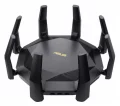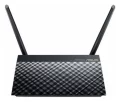Asus OnHub Router review
Asus introduced the OnHub Router router in 2015. It is powered by Qualcomm Atheros IPQ8064 @ 1.4 GHz chipset, 1024 MB of RAM, and 4096 MB of flash memory.
Keen to discover if this Asus router lives up to the hype? Read on!
Table of Contents
- Asus OnHub Router specifications
- Body, dimensions, weight
- System, chipset, RAM, flash, power supply
- Network, protocols, WAN and LAN ports
- Wireless, antennas, speed, security
- Connectivity
- Features
- Links
- Verdict, Pros and Cons
- Photos
- Comparisons
Our personal experiences and opinions form the basis of this article. We aimed to share insights on a topic, and we hoped others would find it useful and inspirational. If you noticed any mistakes or missing details about the Asus OnHub Router, please let us know.

The OnHub Router is a popular router model from Asus, and many users have given it positive reviews. Asus is a well-respected manufacturer in the networking industry.
Asus OnHub Router specifications
| Brand | Asus |
|---|---|
| Name | OnHub Router |
| Type | SRT-AC1900 |
| Rating | |
| Launch | 2015 |
Body
| Dimensions | 132 x 127 x 200 mm |
|---|---|
| Weight | 800 g |
If you plan to move a lot and need to take your router with you, the size is important. Otherwise, the size isn't too crucial. If you plan to mount your router on a wall or ceiling, the weight can affect the mounting process.
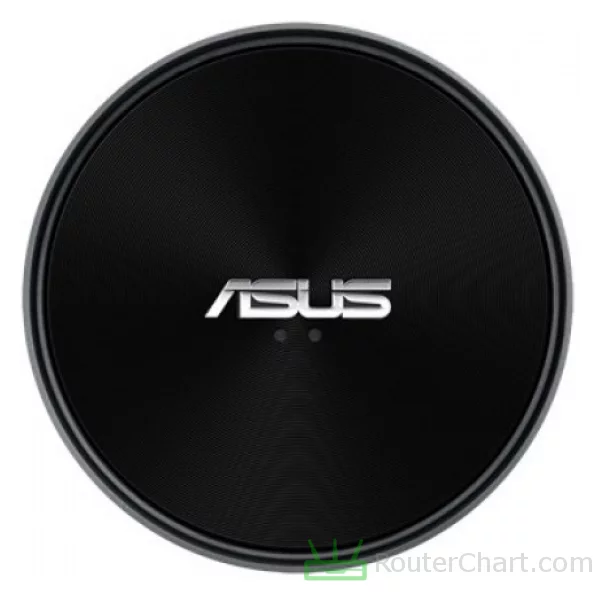
System
| Chipset | Qualcomm Atheros IPQ8064 @ 1.4 GHz |
|---|---|
| RAM | 1024 MB |
| Flash | 4096 MB |
| OS | Google OnHub |
| Power supply | 19 V / 1.75 A |
The Qualcomm Atheros IPQ8064 @ 1.4 GHz CPU provides processing power. The 1024 MB of RAM helps the router manage many tasks concurrently
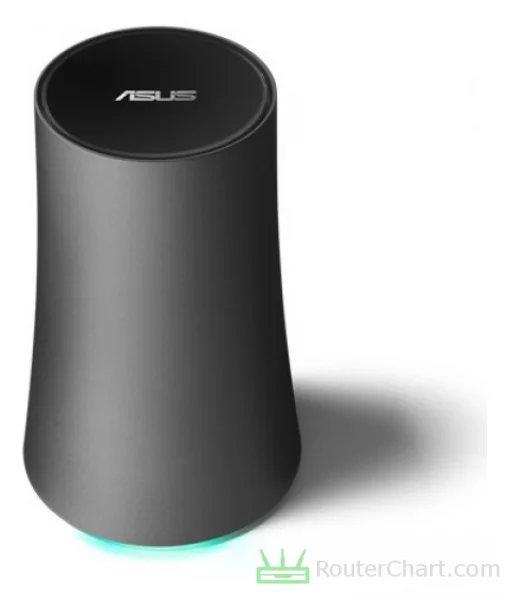
Network
| Protocols | IPv4 IPv6 |
|---|---|
| LAN ports | 1 x 10/100/1000 Mbps |
| WAN ports | 1 x 10/100/1000 Mbps |
| Mobile network | no |
| VPN support | no |
The router also supports IPv6. This allows you to use the latest Internet Protocol. Gigabit Ethernet ports support data transfer rates of up to 1 gigabit per second. A Gigabit WAN port is useful when your internet plan supports high speeds.
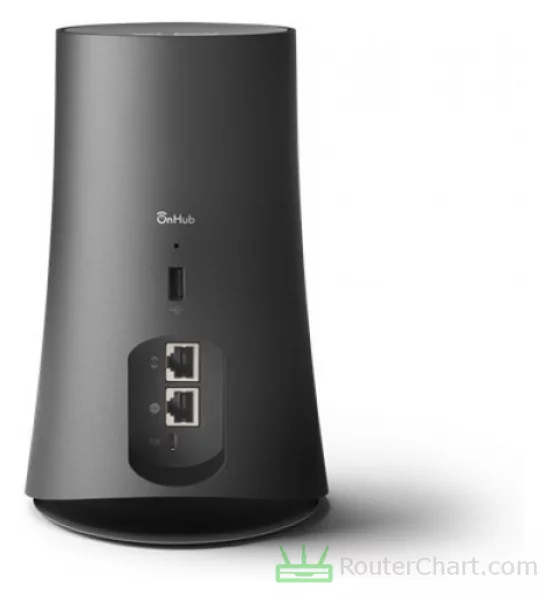
Wireless
| Antennas | 7 x 5 dBi internal |
|---|---|
| 2.4 GHz | yes |
| 5 GHz | yes |
| 60 GHz | no |
| Standards | IEEE 802.11a/b/g/n/ac |
| Class | AC1900 |
| Speed | 600 + 1300 Mbps |
| Transmit power | 17 dBm |
| Security | WEP WPA WPA2 |
| Guest network | no |
The 2.4GHz band refers to the part of the radio spectrum between 2.400 and 2.4835 gigahertz. The 5 GHz band provides faster data transfer speeds compared to the 2.4 GHz band. The Wi-Fi router offers fast data speeds. They're good for streaming HD video, online gaming, and large file transfers. The introduction of WPA2 (Wi-Fi Protected Access 2) improved upon WEP. It provides stronger security.
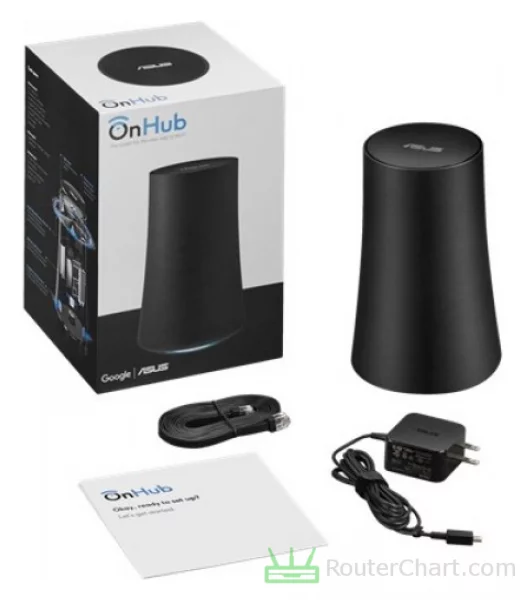
Connectivity
| USB ports | 1 x USB 3.0 |
|---|---|
| Print server | yes |
| File server | yes |
The USB 3 ports provide a fast interface for external storage with data transfer rates of up to 4.8 Gbps. By connecting a USB printer to the OnHub Router router, you can make it accessible to all devices on your network. This router has a USB file server. It lets you connect external storage devices to your network.
Features
| Specials | Bluetooth ZigBee Google Weave Speaker |
|---|
Links
| Official site | https://www.asus.com/ |
|---|
Pros and Cons
Every router, including this Asus one, has its good sides and not-so-good sides. Let's take a closer look at both to get a full understanding of what this router can do. Just remember, this is just what I think, and you might see things differently.
Pros
- generous memory
- plentiful flash
- IPv6 capable
- high-speed LAN port
- high-speed WAN port
- works on 5 GHz band
- decent Wi-Fi performance
- USB 3 compatible
- printserver functionality
- fileserver operation
Cons
- missing Wi-Fi 6 support
- incompatible with WPA3
- missing WPS support
Asus OnHub Router photos

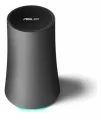

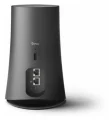
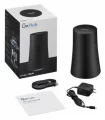

Asus OnHub Router comparisons
We've noticed that many of our visitors like to compare the Asus OnHub Router router with these popular models.
If there’s information about the Asus OnHub Router that you would like to see on this site, then write to us.
Updated: May 25, 2024


